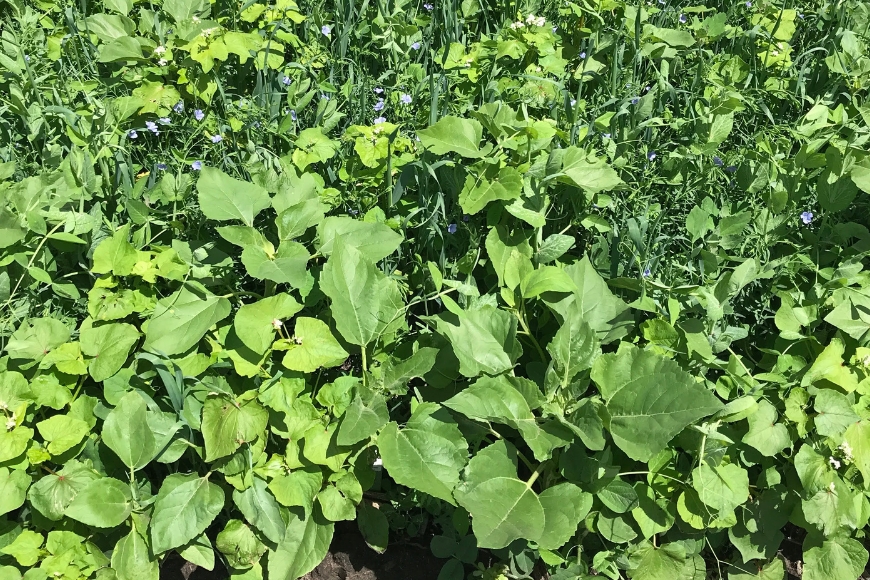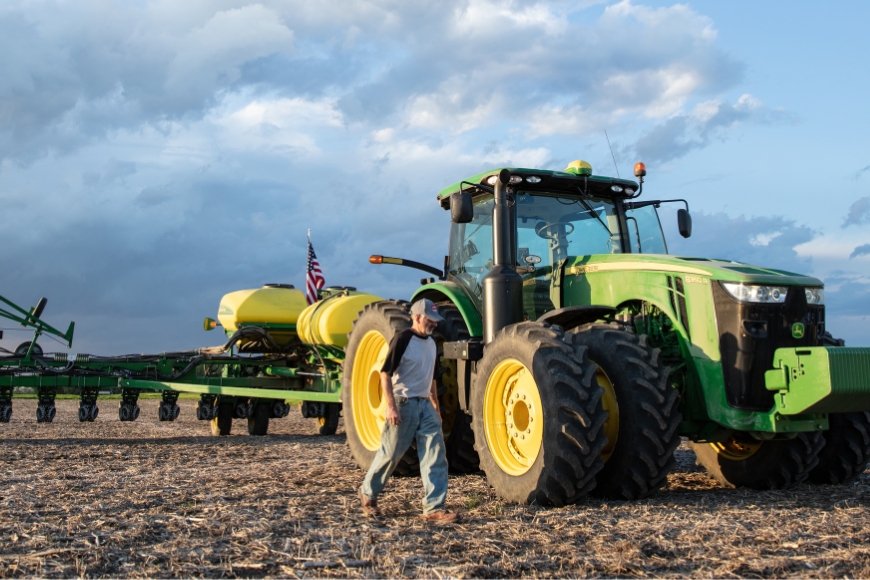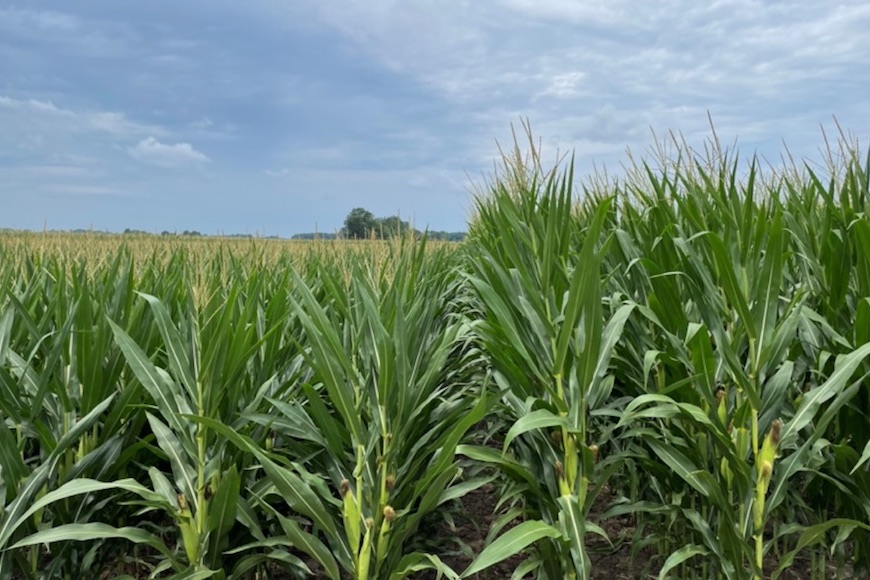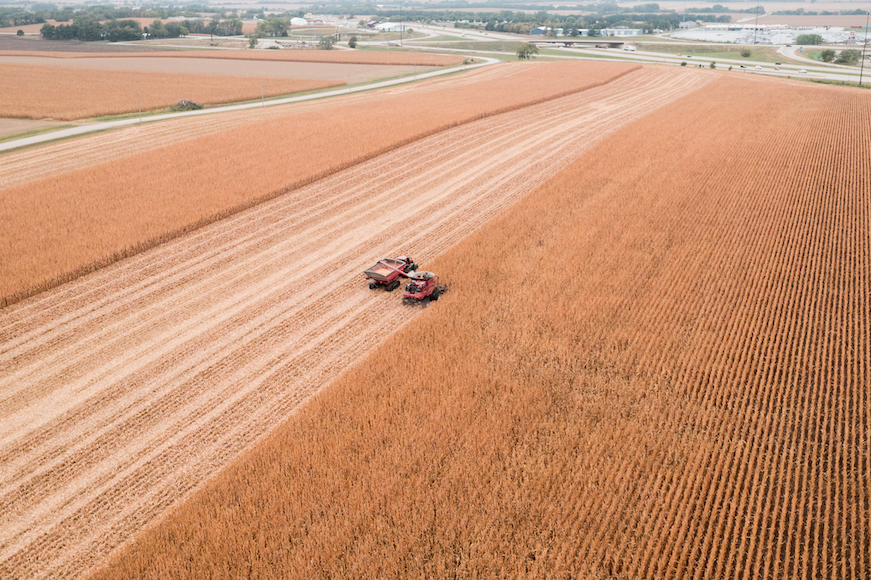How to Terminate Cover Crops Successfully
Mark Glady
Market Development Agronomist

Cover crops have gained popularity on some farms to enhance soil health, manage erosion and improve nutrient cycling. While the benefits are widely discussed in the farming community, the practicalities of cover crop management, particularly termination, are often understated.
Terminating a cover crop effectively is critical to ensure you reap its agronomic benefits and for the success of subsequent cash crops. Let’s explore some common cover crop termination methods, their pros and cons, and best practices to execute them successfully.
Common Cover Crop Termination Methods
Most growers use two primary methods for cover crop termination: herbicide application and tillage. Each method has strengths and weaknesses, requiring you to develop a plan based on your production practices and field environment.
Herbicide Application
Using herbicides such as glyphosate, clethodim, 2,4-D, or dicamba can effectively terminate many cover crop species. When best management practices are applied, you can get a thorough and controlled kill to start clean with your cash crop planting.
Pros:
• Provides consistent results, especially when appropriate adjuvants are used to enhance canopy penetration and leaf coverage.
• Minimizes soil disturbance, preserving soil structure and reducing erosion risk.
• Suitable for no-till operations.
Cons:
• Requires favorable weather for timely application. May be challenging in wet springs when field access is limited.
• Certain species, like rye, can be difficult to terminate if not sprayed during an active growing stage or if there is poor herbicide spray coverage.
Tillage
Tillage involves mechanically disrupting the soil to terminate the cover crop by uprooting and turning over the plant material.
Pros:
• Can quickly create a clean seedbed.
• Does not depend on chemical inputs.
Cons:
• Can leave deep-rooted cover crop species partially intact, leading to regrowth.
• Increases soil erosion risk, especially on sloped or highly erodible land.
• Wet conditions can limit field access for tillage equipment.
Which Cover Crop Termination Method Is Best?
Both cover crop terminations can be equally effective, but ultimately, the best choice will depend on your production practices and field environment. When deciding which termination method is right for your operation, consider the following:
Soil Type and Erosion Risk
In highly erodible soils, herbicide termination is often preferred as it preserves soil structure. Tillage may be suitable on flatter fields where erosion is less of a concern.
Weather Conditions
Wet springs can delay field access for both herbicide application and tillage. If wet fields are a concern for cover crop termination, consider incorporating grazing or strategic mowing to help manage excessive cover crop growth.
Type of Cover Crop
Some species are more suited to specific termination methods. Rye, for example, is known for its vigorous growth and can be challenging to control with tillage alone, so a herbicide application may be a better option.
Operational Goals
If your goal is to protect soil health and minimize disturbance, herbicide termination or planting green (planting directly into a live cover crop before termination) may align better with your goals.
Four Tips for Successful Cover Crop Termination
1. Wait For the Right Conditions
Herbicide applications are most effective when the cover crop is actively growing. For tillage, ensure the soil is dry enough to thoroughly disrupt the root system.
2. Optimize Spray Coverage
Use adjuvants to improve herbicide penetration in dense cover crop canopies. Effective adjuvants can optimize spray droplet size for better leaf coverage and canopy penetration, resulting in a more effective cover crop kill.
3. Avoid Planting into Thick Cover Crop Residue
Thick cover crop residue can negatively impact planting, resulting in uneven emergence and stands. Allow enough time for cover crop residue to dry and decompose before planting.
4. Monitor Soil Moisture
Cover crops can deplete soil moisture, especially in dry springs. If termination is delayed, the cover crop may outcompete your cash crop for water.
Unlock the Full Potential of Cover Crops
Cover crops can add agronomic and economic benefits to many farm operations if managed effectively. By understanding the pros and cons of each cover crop termination method and employing best management practices, you can unlock the full potential of cover crops while minimizing risks to your cash crops. For more information about planning a successful cover crop strategy, consult your local agronomic advisor or CROPLAN retailer.
All photos are either the property of WinField United or used with permission.© 2025 WinField United. Important: Before use always read and follow label instructions. Crop performance is dependent on several factors many of which are beyond the control of WinField United, including without limitation, soil type, pest pressures, agronomic practices and weather conditions. Growers are encouraged to consider data from multiple locations, over multiple years and to be mindful of how such agronomic conditions could impact results. CROPLAN and WinField are trademarks of WinField United.
IF YOU LOVE OUR INSIGHT, YOU’LL LOVE OUR ROI POTENTIAL
Every successful harvest starts with a seed. It just can't end there. Choose which high-performing seed products you’ll start with this season.






